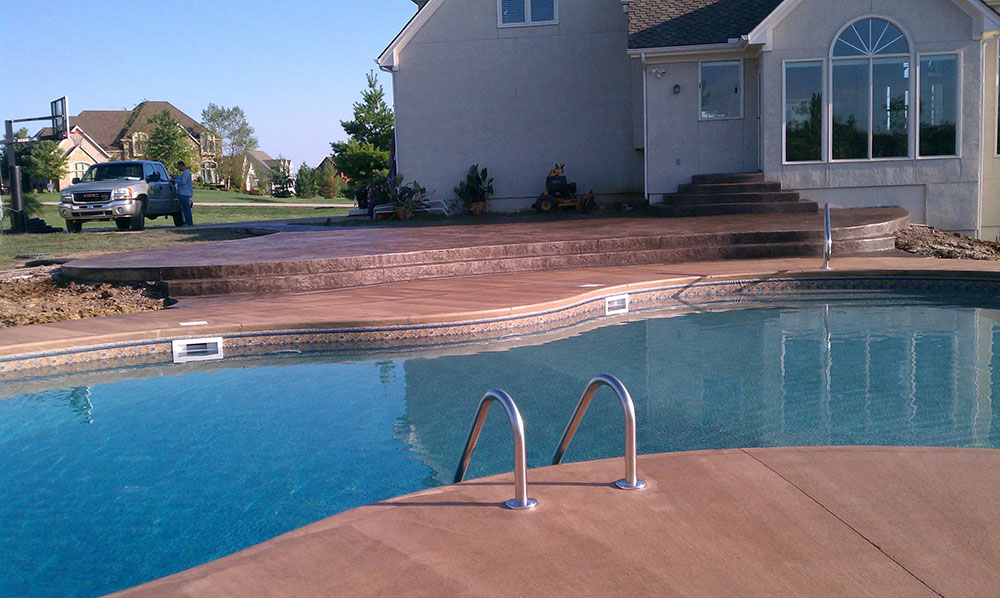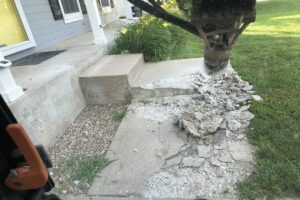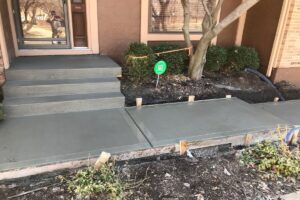Colored concrete can add a lot of wow factor to your home. Get colored concrete for your driveways, your sidewalk, your patio, your basement, anywhere you like.
But there are different ways to color concrete and not all of them will be ideal for your needs. Taking the least expensive way might work in certain situations, but not with your concrete.
Colored Concrete: The Right Way vs. The Cheap Way
Coloring concrete, especially when used with concrete polishing, can provide translucent, almost gem-like effects for floors, walls, and so much more. Here are some of the better ways to color your concrete.
Integral coloring
Colorant added to concrete during mixing produces uniform color throughout the slab, It may be liquid or powder and is for new installations only, and usually only for large monochrome areas.
That is because the main application device is a ready-mix truck. Integral colors are expensive because you are coloring the entire depth of the slab. The results are fantastic.
Acid Stains
Acid stains are formulas of acid, metallic salts, and water. The acid chemically reacts with minerals in the concrete, creating a unique, mottled color effect that is very durable.
Concrete floors that have been colored with acid stained must be neutralized and rinsed thoroughly to remove any excess. Acid stains are hazardous materials and require safety precautions.
Acid stains can be used for retrofits or new installations, but any spills or drips can make a permanent mark on the floors.
Water-Based Dyes
These stains and dyes have several advantages. They are odorless, safe and easy to apply, and dry quickly. Different colors can be easily mixed and matched, creating striking patterns and effects in areas large or small.
Used with hardening, densifying, and polishing, water-based stains can create a translucent, gemlike effect. Water-based stains must be used with protective coatings to seal in the color.
They are not UV-stable and will fade in direct sunlight and are great for new installations or retrofits. Water-based colors are easily applied and the color usually goes on before the floor has been hardened and densified.
Shake-On Colors
Shake-on colors are made of finely-ground pigments and dry cement that is added onto freshly poured concrete. The powder gets worked into the concrete when it is being leveled off.
Excess water mixes with the powder and it blends in together on the surface. Because the color is on the top, grinding and polishing will remove the color. Since shake-on colors rely on water from freshly placed concrete, they are only suitable for use on freshly placed concrete.
Colored Concrete the Wrong Way
Ideally, you want the coloring inside the concrete, mixed in so it is permanent. A coating of paint or a colored film added afterward will not hold up very long.
Dyes, pigments, or coloring that is mixed right in will help to endure not just the long life of your floor color but that the color will be consistent throughout.
Adding a pigment that is added after the concrete is dry is only surface coloring and will not last. If the area is to see a lot of traffic, then get the colored concrete that has the color mixed right into it before it’s poured.
Give us a call or check out our website for more ideas. Here at Johnson Concrete, we have the expertise to connect highly trafficked areas of your property with attractive walkways, create patios or home basketball courts, or lay down the foundations for property improvements such as gazebos, garages, sheds, or home offices.




